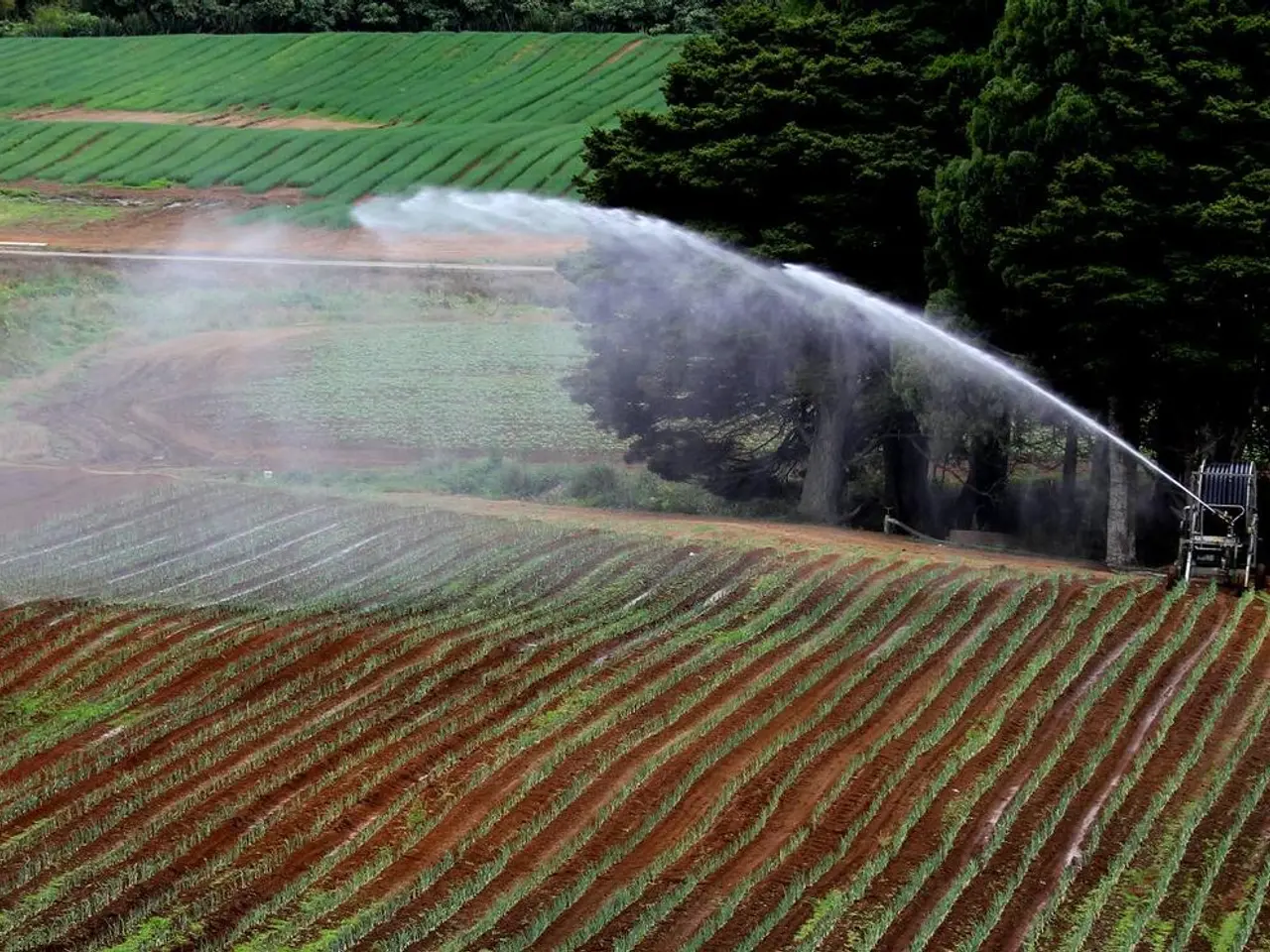Guide for Farmers on Creating a Sustainable Multi-Species Paddock using Permaculture Practices
In the world of modern agriculture, a farming method known as multi-species paddock permaculture is gaining traction. This innovative approach combines regenerative agriculture, diverse ecosystems, and holistic grazing management to create a system that benefits both the environment and the economy.
At Rancho Cacachilas in Baja California, Mexico, Holistic Livestock Management has led to significant improvements in grazing, soil health, and land care. This is just one example of the positive impact multi-species paddock permaculture can have.
The economic potential of this farming method lies in its ability to enhance ecosystem health, improve soil fertility, reduce input costs, diversify income streams, and increase resilience to environmental stresses. These factors can lead to higher long-term profitability and sustainability.
Key economic benefits include improved soil fertility and pasture health, enhanced sustainability and lower input costs, diversified income streams, increased farm resilience, and market appeal for premium products.
Improved soil fertility and pasture health are achieved through multi-species grazing, which integrates animals with different grazing habits that complement each other, enhancing nutrient cycling and reducing the need for synthetic fertilizers. For instance, cattle and chickens together can manage pests and boost soil quality through varied manure inputs and grazing patterns.
Enhanced sustainability and lower input costs are achieved by building a balanced ecosystem through multiple species and permaculture design. This reduces dependence on external inputs (fertilizers, pesticides, irrigation), lowering costs and risks.
Diversified income streams are created by incorporating different animal species alongside crops and trees (agroforestry) which provide multiple products like meat, eggs, timber, fruit, and dairy. This can buffer farmers against market fluctuations and increase profitability.
Regenerative impact increases farm resilience by practices like rotational multi-species grazing and permaculture, which improve drought resistance and reduce erosion, securing economic stability in the face of climate variability.
Market appeal and premium products are also significant benefits. Sustainable, diverse farming methods often attract premium markets willing to pay for “regenerative” or “pasture-raised” products, potentially increasing revenue.
In addition to its economic benefits, multi-species paddock permaculture supports biodiversity by creating homes for pollinators and other wildlife, leading to healthier and more resilient farms.
Good planning and design, using native and other plants, choosing the right grazing patterns and recovery times, and working with experts are important for success in multi-species paddock permaculture. Implementing multi-species grazing involves using smart grazing strategies and monitoring animal impact to optimize plant growth and animal health.
In multi-species paddock systems, natural pest control methods include encouraging beneficial insects, planting certain plants together, bringing in birds or small mammals, and using organic mulches and cover crops. Perennial plants offer long-term soil stability, nutrient cycling, diverse habitat structure, and erosion control.
The USDA's Conservation Stewardship Program, Sustainable Agriculture Research and Education (SARE) Grants, and The Nature Conservancy's Working Woodlands Program are funding sources for sustainable farming practices like multi-species paddock permaculture. New tech like precision farming and remote monitoring, advances in plant breeding and using microbes, and growing popularity and community support are future trends in paddock permaculture.
In conclusion, multi-species paddock permaculture farming offers a promising solution for sustainable and profitable agriculture. By enhancing ecosystem function and diversifying production, it can translate into greater profitability, resilience, and sustainability over time. However, the exact economic potential depends on local conditions, species selected, market access, and effective management practices. Ongoing innovation and education are also critical to maximizing benefits.
- Multi-species paddock permaculture promotes soil health through integrated multi-species grazing, which enhances nutrient cycling and reduces the need for synthetic fertilizers.
- Enhanced sustainability and lower input costs can be achieved through the use of permaculture design, reducing dependence on external inputs like fertilizers, pesticides, and irrigation.
- Diversified income streams can be created by incorporating different animal species alongside crops and trees, offering multiple products such as meat, eggs, timber, fruit, and dairy.
- By practicing rotational multi-species grazing and permaculture, farms can become more resilient, improving drought resistance and reducing erosion, securing economic stability in the face of climate variability.
- Sustainable, diverse farming methods often attract premium markets, potentially increasing revenue through the sale of "regenerative" or "pasture-raised" products.
- The USDA's Conservation Stewardship Program, Sustainable Agriculture Research and Education (SARE) Grants, and The Nature Conservancy's Working Woodlands Program are funding sources for sustainable farming practices like multi-species paddock permaculture, while new technology, advances in plant breeding, and growing community support are future trends in paddock permaculture.




